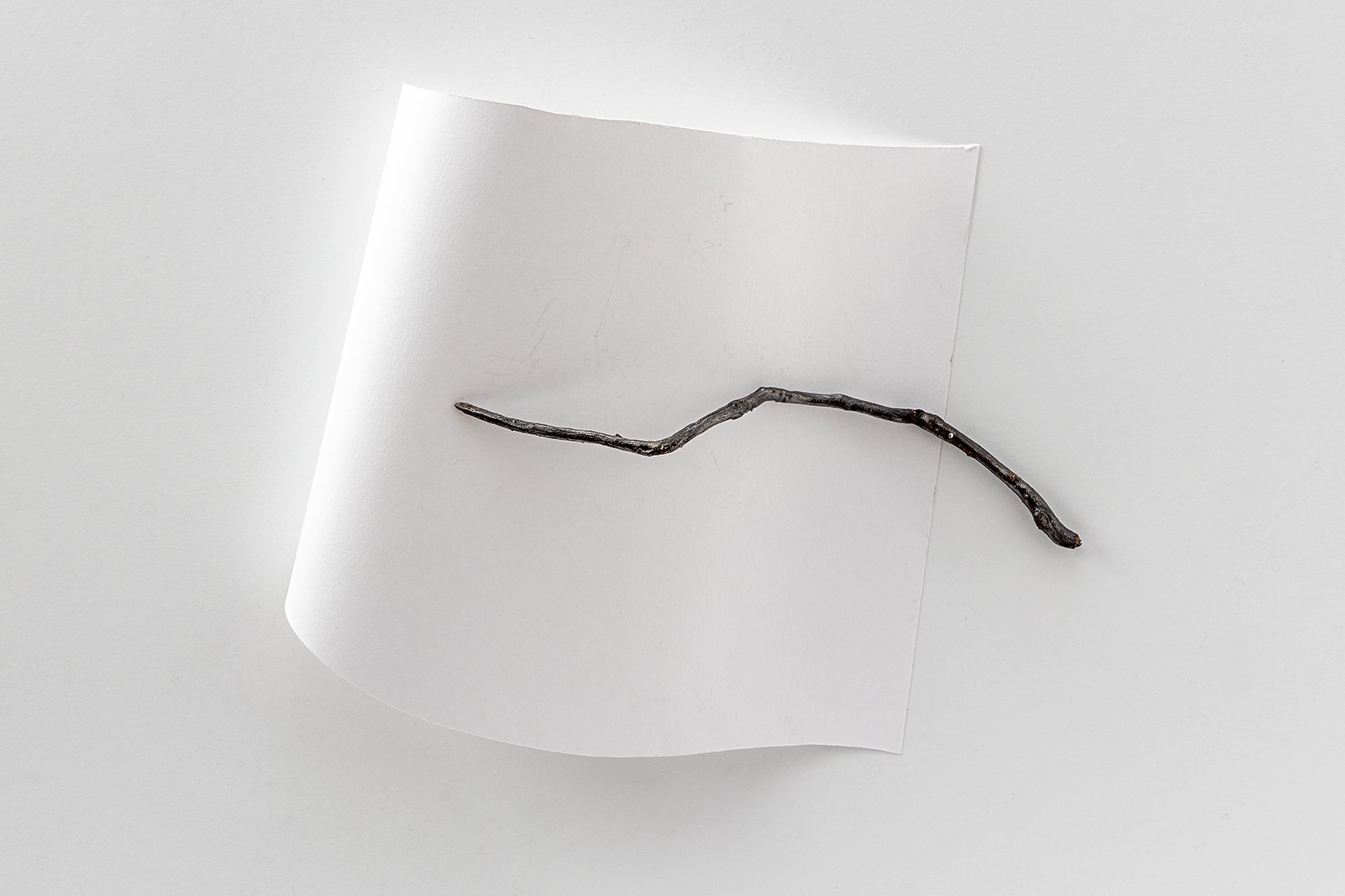Victor Gonçalves
Title: In the end everything is a carbon chain | Date: 2024
Technique: Roots covered in graphite and 200g Fabriano paper
Dimensions: Varied dimensions ( between 15 x 25 to 45 x 37 cm ) | Edition of /32
………………………………………………………………………………………………………………
All artworks are accompanied by a signed certificate of authenticity.
Shipping informations | #available
VAT included at checkout | Applicable assembly instructions will be delivered with the artwork.
………………………………………………………………………………………………………………
Title: In the end everything is a carbon chain | Date: 2024
Technique: Roots covered in graphite and 200g Fabriano paper
Dimensions: Varied dimensions ( between 15 x 25 to 45 x 37 cm ) | Edition of /32
………………………………………………………………………………………………………………
All artworks are accompanied by a signed certificate of authenticity.
Shipping informations | #available
VAT included at checkout | Applicable assembly instructions will be delivered with the artwork.
………………………………………………………………………………………………………………
Title: In the end everything is a carbon chain | Date: 2024
Technique: Roots covered in graphite and 200g Fabriano paper
Dimensions: Varied dimensions ( between 15 x 25 to 45 x 37 cm ) | Edition of /32
………………………………………………………………………………………………………………
All artworks are accompanied by a signed certificate of authenticity.
Shipping informations | #available
VAT included at checkout | Applicable assembly instructions will be delivered with the artwork.
………………………………………………………………………………………………………………
"The research that resulted in an installation presented in Barcelona at the Espronceda Institute of Art & Culture within the Art Nau festival and at the Bienal de Cerveira invites the audience to question the central idea that, ultimately, everything, including ourselves, can be reduced to a carbon chain. And now?"
—
"The research that resulted in an installation presented in Barcelona at the Espronceda Institute of Art & Culture within the Art Nau festival and at the Bienal de Cerveira invites the audience to question the central idea that, ultimately, everything, including ourselves, can be reduced to a carbon chain. And now?" —
-
1. What aspects does this artwork integrate (formally, plastically, or conceptually)?
One of the most fundamental conceptions of drawing is the act of marking a surface. "In the end, everything is a carbon chain" is a series of 32 drawings that make up an installation in which I seek to challenge the limits of drawing concepts. In these compositions, the line is liberated from the static surface of the paper and gains materiality with the roots, causing the white surface of the paper to tension and curve. Here, it is the paper that scratches the graphite, not the other way around.
2. Where is it embedded? (what was the genesis of the making? - the milieu, the context).
During the artistic residency, which involved walking through the forest of Vic in Barcelona, I noticed roots detaching from their trees. My first artistic response was to collect some of these roots and then cover them with graphite to experiment with drawings. From other graphite research I've been conducting, I made some observations: trees, the source of cellulose for paper production, absorb large amounts of carbon from the atmosphere as they grow; graphite is simply carbon atoms in the form of hexagonal crystals in layered structures. This is how I combined these seemingly disparate materials, a union evident when viewed as an installation that emulates an atomic structure. Although completed as an installation, the concept of edition lies in the creative act of repeating the same action with the same materials with the same intention.
3. What question or action does it propose?
The research that resulted in an installation presented in Barcelona at the Espronceda Institute of Art & Culture within the Art Nau festival and at the Bienal de Cerveira invites the audience to question the central idea that, ultimately, everything, including ourselves, can be reduced to a carbon chain. Now what?
-
Victor Gonçalves (Brazil, 1989) lives and works in Lisbon. He has a degree in Geography and a specialization in Philosophy. Between 2017 and 2020, he studied with the artist Iole de Freitas at Parque Lage, in Rio de Janeiro (Brazil). Since 2023, he has been directing Atelier BL2 Association. His work is driven by drawing, directed by the critique of the utilitarianism of desires to instrumentalize art; discussing the materiality and fragility of human relationships in the world.
Highlights in his career include participation in the XXII International Art Biennial of Cerveira (2022); his first solo exhibition "Por um Fio," curated by Cristiana Tejo, at NowHere (2021) in Lisbon; and in 2020, one of his works was acquired by the Museum of Modern Art of Rio de Janeiro for the Cinematheque collection.



